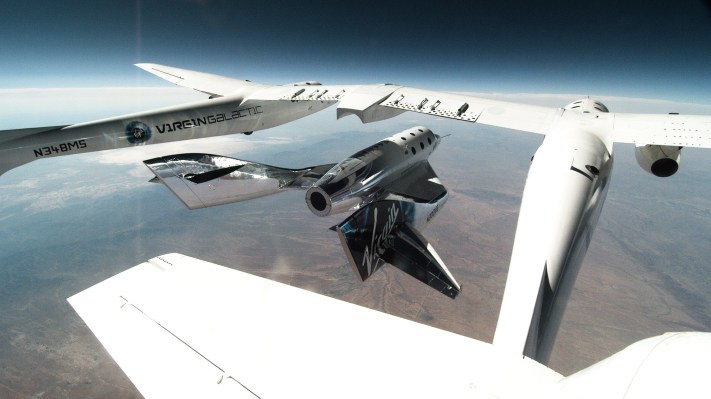Virgin Galactic has passed a key milestone in its SpaceShipTwo qualification program. The company performed a glide flight, which means that it was flying its VSS Unity spacecraft unpowered in glide configuration, after its release from its carrier aircraft, a modified Boeing 747 called VMS Eve.
This flight was the second such test flight that Virgin has flown with Unity from its Spaceport America launch facility in New Mexico, but it was done at higher altitudes and at higher speeds than the earlier flight. This sets up Virgin to now move on to powered spaceflight from Spaceport America — its first at the facility, though Unity itself has flown previously in a test capacity, reaching a height of 55.9 miles above Earth at supersonic speeds in 2019 for its most impressive demonstration.
Virgin Galactic returned to powered spaceflight testing at the Mojave Air and Space Port in California in 2018 — four years after it had a fatal crash during testing of Unity’s predecessor, VSS Enterprise. Virgin’s copilot for that flight, Michael Alsbury, was tragically killed in that incident, and pilot Peter Siebold suffered serious injuries.
Unity has had no such issues, and today’s unpowered glide flight seems to have gone perfectly to plan, providing Virgin with key data about flight conditions and aircraft/spacecraft behavior from the New Mexico launch site, which will ultimately also serve Virgin Galactic’s paying customers as the departure and return location for their tourist trips to the edge of space.
The next major step for the company as it moves toward actually getting those ticket-holders on their space tours is performing powered test flights from Spaceport America. As mentioned, Unity has done powered test flights previously, including with Virgin’s Chief Astronaut Trainer Beth Moses on board, but there are still a number of intermediary steps that need to take place to get there, including reviewing the data collected during today’s flight, and making any small changes to the launch and flight system that may be required to ensure the success of a powered spaceflight.
Virgin had been looking to begin commercial flights as early as the middle of this year, but given that it still has some significant testing to complete, the timeline looks more like end of year as a best-case scenario for any actual tourist launches.
